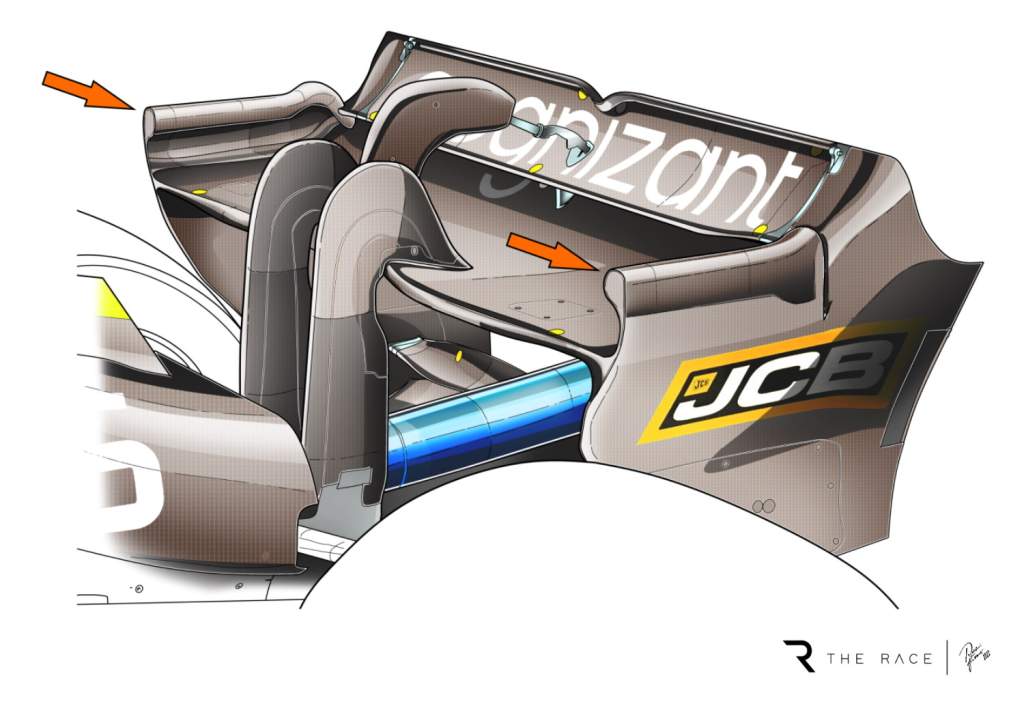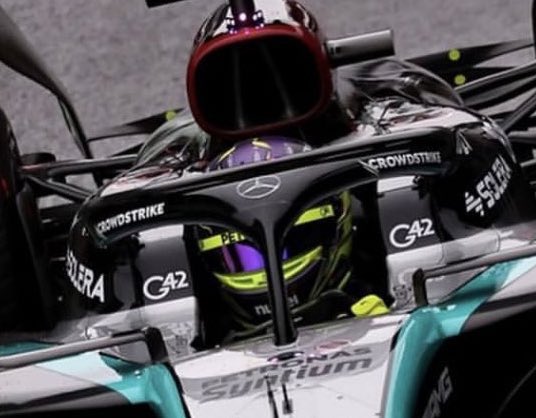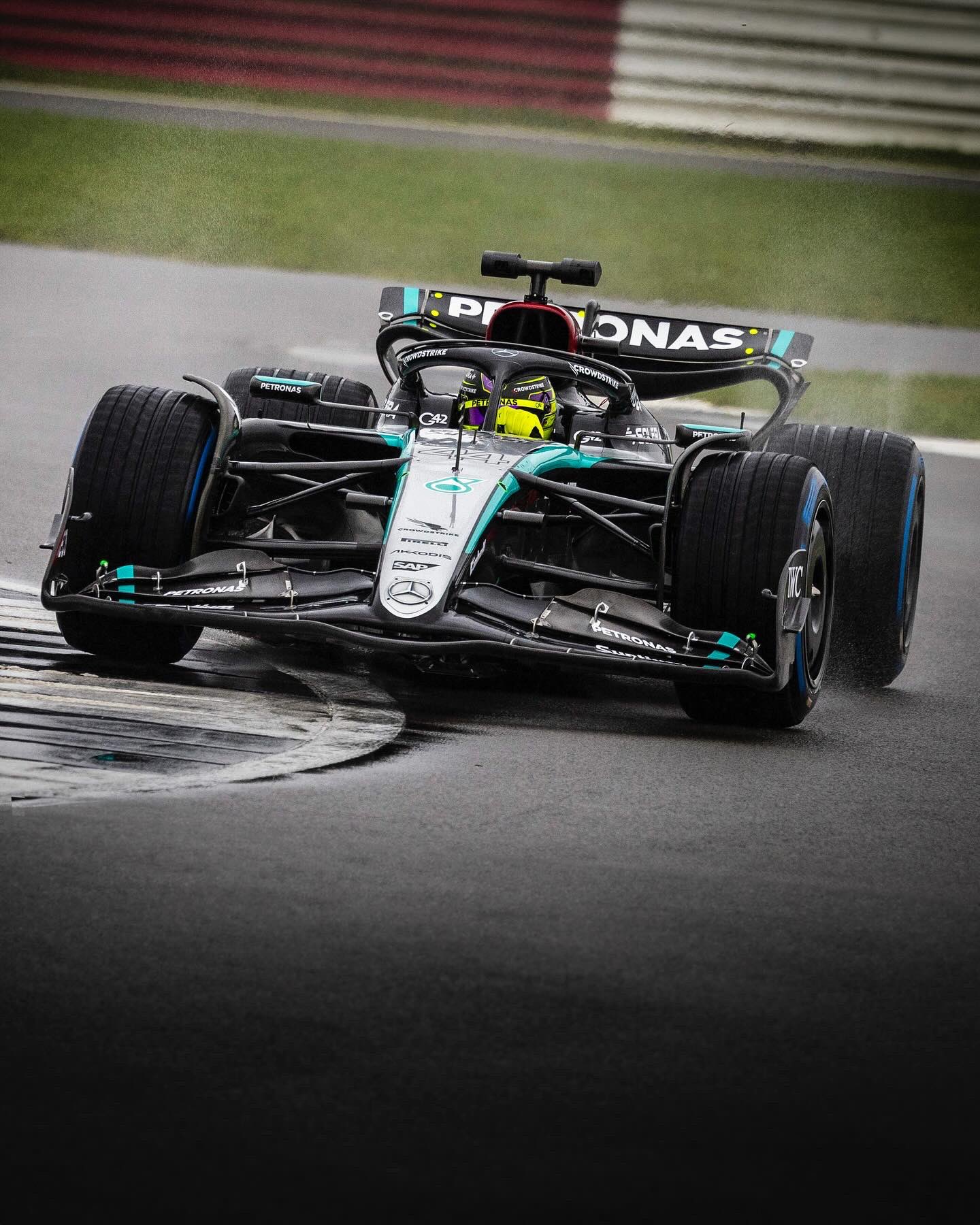Matt2725 wrote: ↑14 Feb 2024, 15:38
Some would call it clever. But I guess it depends what team you support as to whether it's genius or not.
The solution consists of two governing features:
1) reducing the flap Y cross section to a minimal radius circle to conform with the rules
2) generating an abrupt transition in flap trailing edge to enable vortex generation
Feature 1 one was first applied by Mercedes a year ago to enable more outwash near FW endplate as an answer to small rule rewording making their
W13 Miami-spec FW endplates outlawed:

Feature 2 was notably applied by Alpine in Hungary last year:

Are Mercedes the first team to put those two together? Or did everyone else decide to follow the intention of the rules, which were made quite clear years ago by Ross Brawn for FOM and FIA technical delegates:
1) complete removal of intentional, flap-tip-originating stream-wise vortices on the front wing except the outboard tip vortices
2) removal of complex, vorticity-dependant barge boards
3) removal of rear wing endplate tips to reshape the trailing edge vortices and enable cleaner airflow for the following car
4) introduction of free-to-design, ground-effect floors which don't depend so much on external vortices to keep the dirty air out and improve floor performance
You can see the "we want to eradicate vortex-dependency" idea behind it and all the teams agreed with these intentions before the rules were formalised. Both FOM and FIA made clear the intent of the rules is an important factor for them and all the gray areas which significantly breach this will be removed promptly - 2022 AMR Hungry RW endplates as an example:

JordanMugen wrote: ↑14 Feb 2024, 16:43
It wouldn't be anywhere near as powerful as Y250, would it?
You'd be surprised. That 4th flap has a decent chord and a big AoA and the vortex feeds on local low pressure, energising it further.







